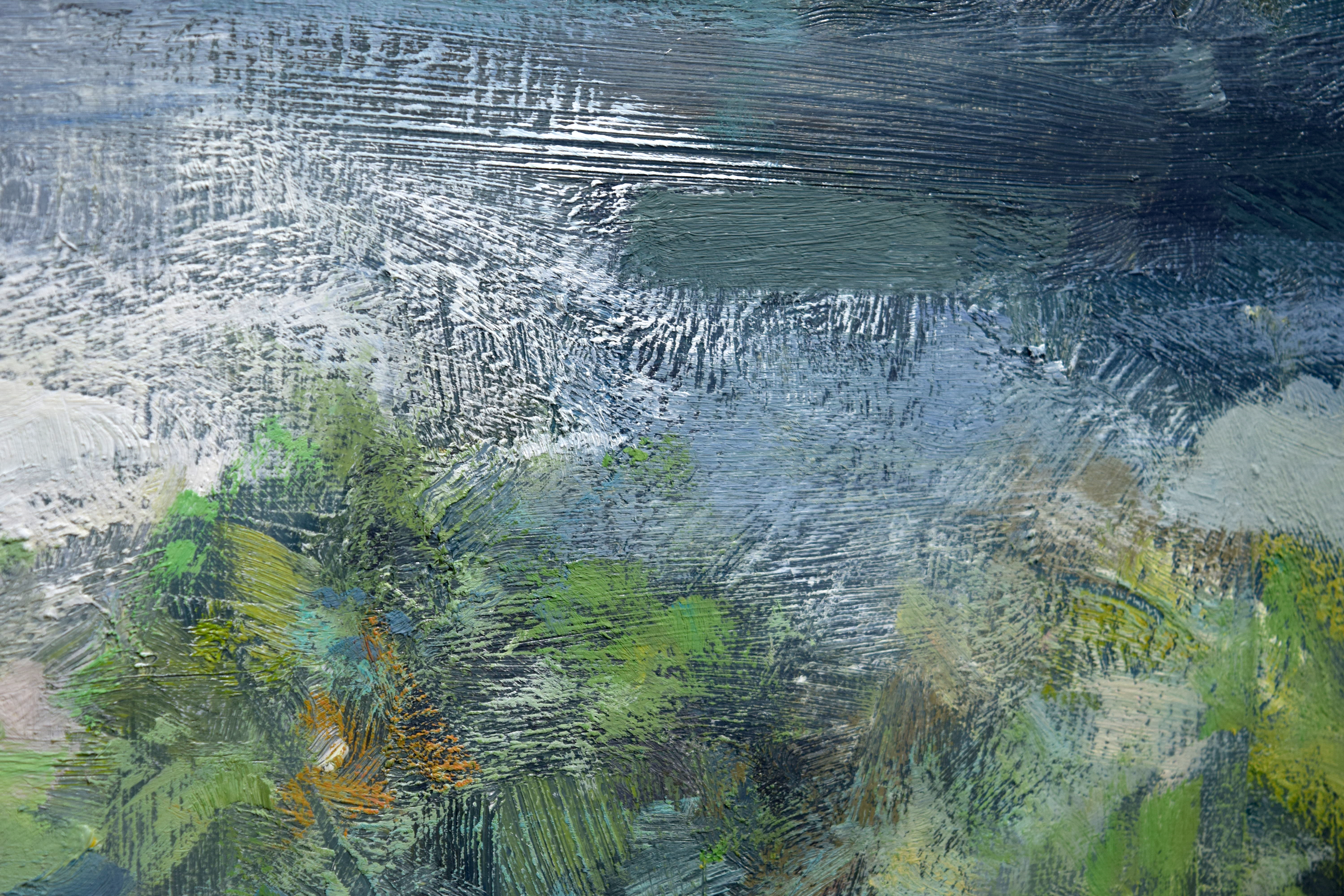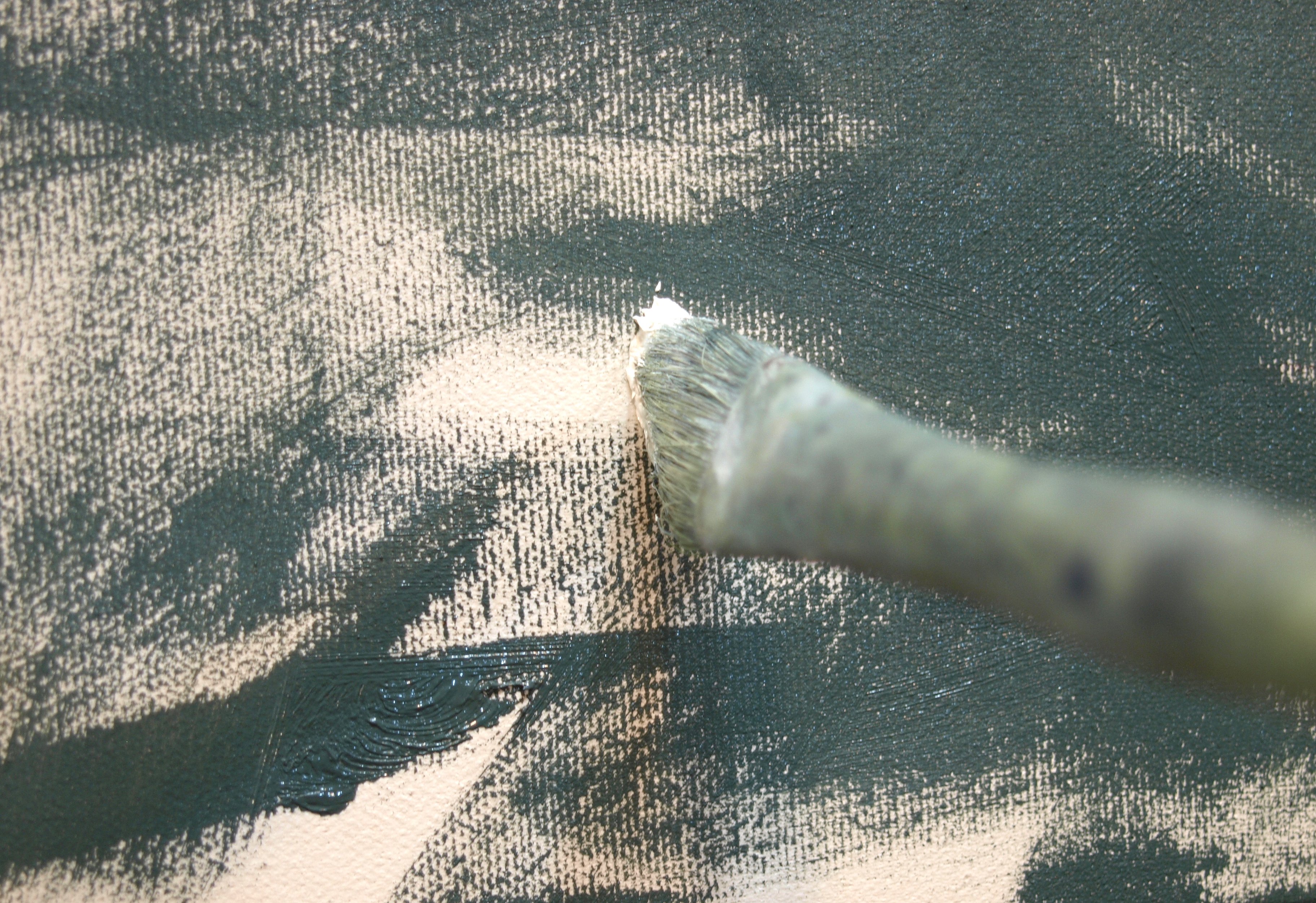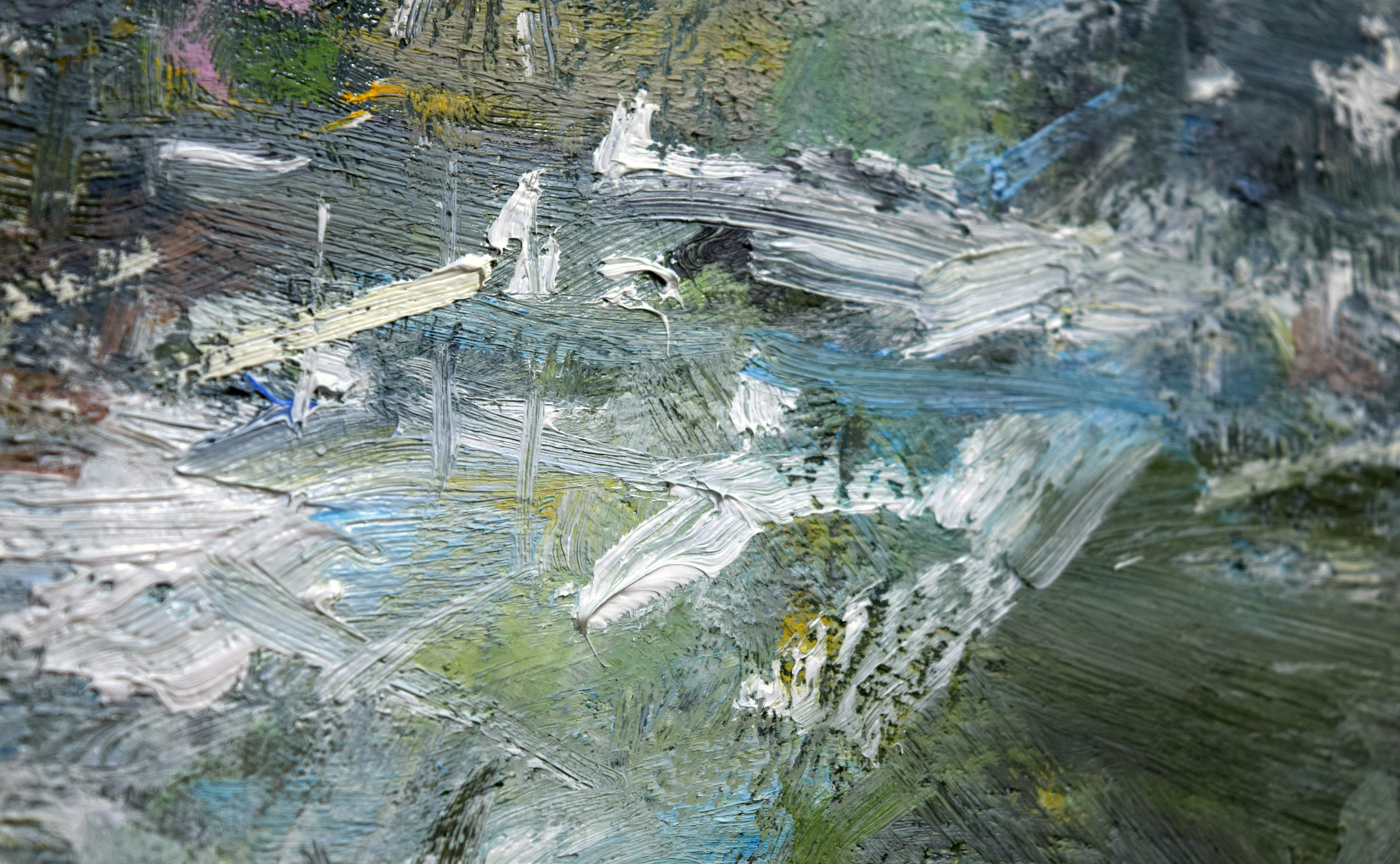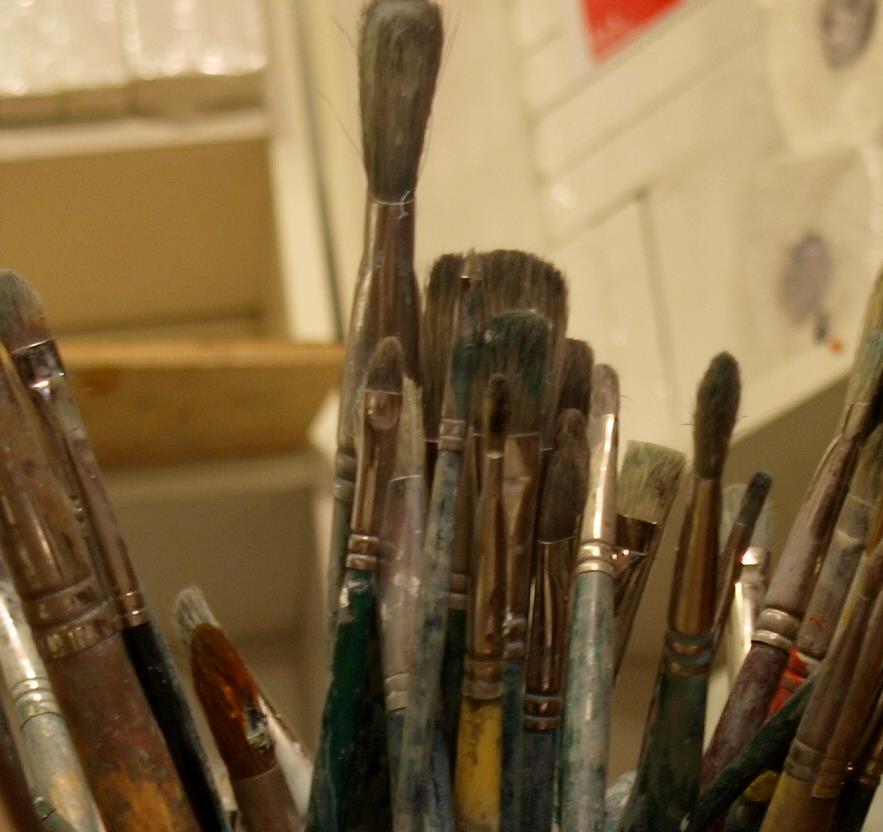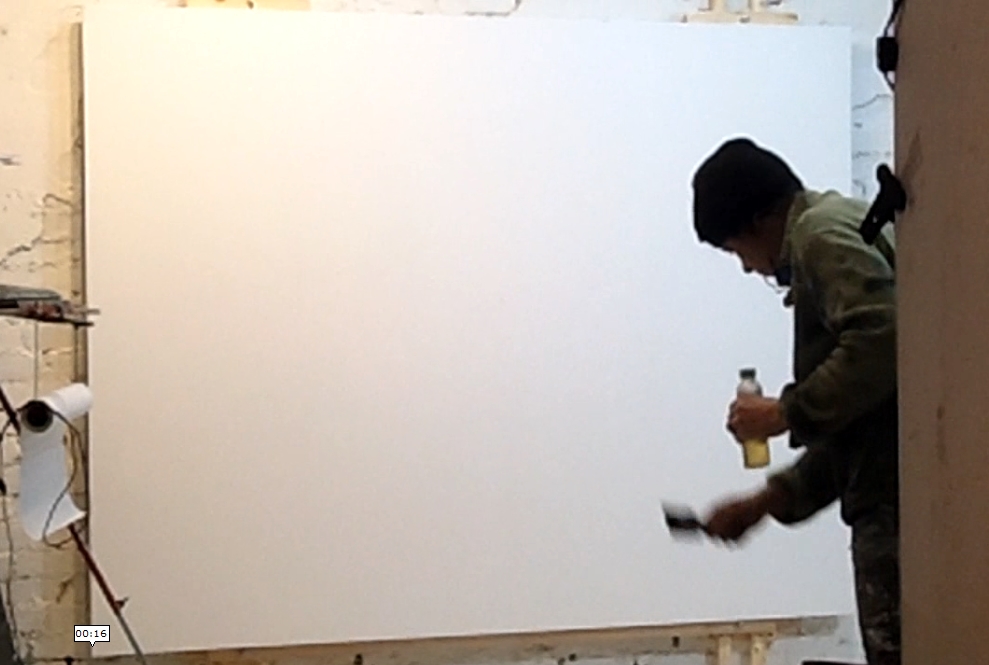Focal Brushstrokes
Focal brushwork starts once you have gone through laying down the directional brushstrokes and have started moulding your elements through descriptive brushstrokes. These are the brushstrokes whose purpose it is to focus the eye, this is not that they are used at the focal point but to focus the eye. What is the difference? Imagine a painting that is completely in focus and sharp with one blurry spot, lacking in detail somewhere in the painting. Your viewers eye will naturally be drawn to a place where it can rest and when pattern recognition comes into play, this would be the blurry point so your blurry point is your focal point.
Focal brushwork literally focuses the eye and is an important tool if we approach the painting with the attitude of building a tapestry so that the painting is inherently rich, has complexity and has enough room for the viewer to engage and complete the painting. With this intention a painting can easily become too rich in layers with nothing to hold onto and the focal brushstroke carries out this task for us.
Focal brushwork relies on the idea of one brushstroke instead of 2 and should be placed with confidence and an awareness of how it starts and finishes. A focal brushstroke which is unnecessarily broken or hesitant will not carry the strength needed to focus the eye. The common feature of a focal brushwork is that it is usually opaque and is confidently placed preferably with some kind of tactile quality so that the viewer gravitates to it, they can be thick or thin, short or long. A focal brushstroke may or may not break over other strokes but it is not like descriptive strokes in that it does not add to the tapestry by being transparent, it is opaque – it covers it’s space.
It is important to pay attention to when you are using focal brushwork in a painting as it is common for painters to use this type of stroke throughout the piece with the resulting work being complicated, made up of many parts. A complicated painting is a fine choice if it is a choice that is relevant to the concept but complex is always preferred as complex gives your viewer enough space to build their own meaning into the painting.
It is important not to hold your focal brushstroke as precious. It is built and destroyed repeatedly with the hopes that some of the original stroke will remain in the final painting as this adds more visual luxury to the painting.

